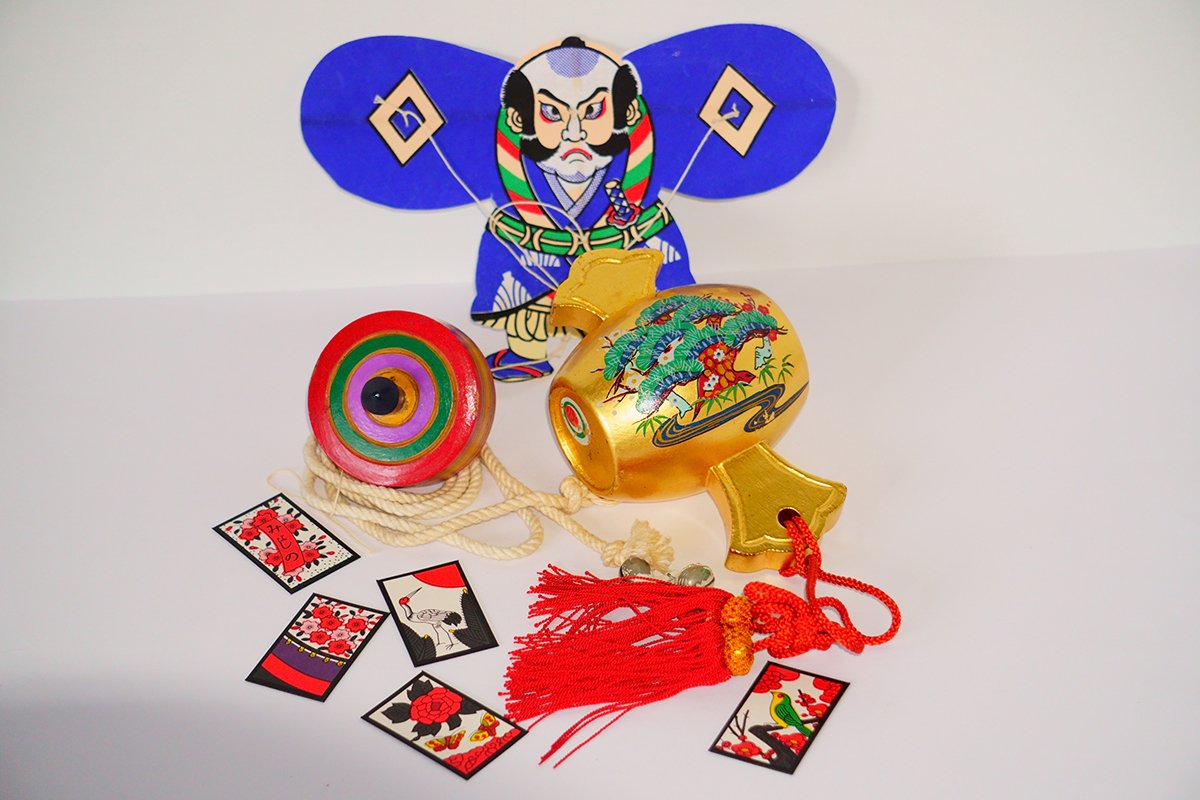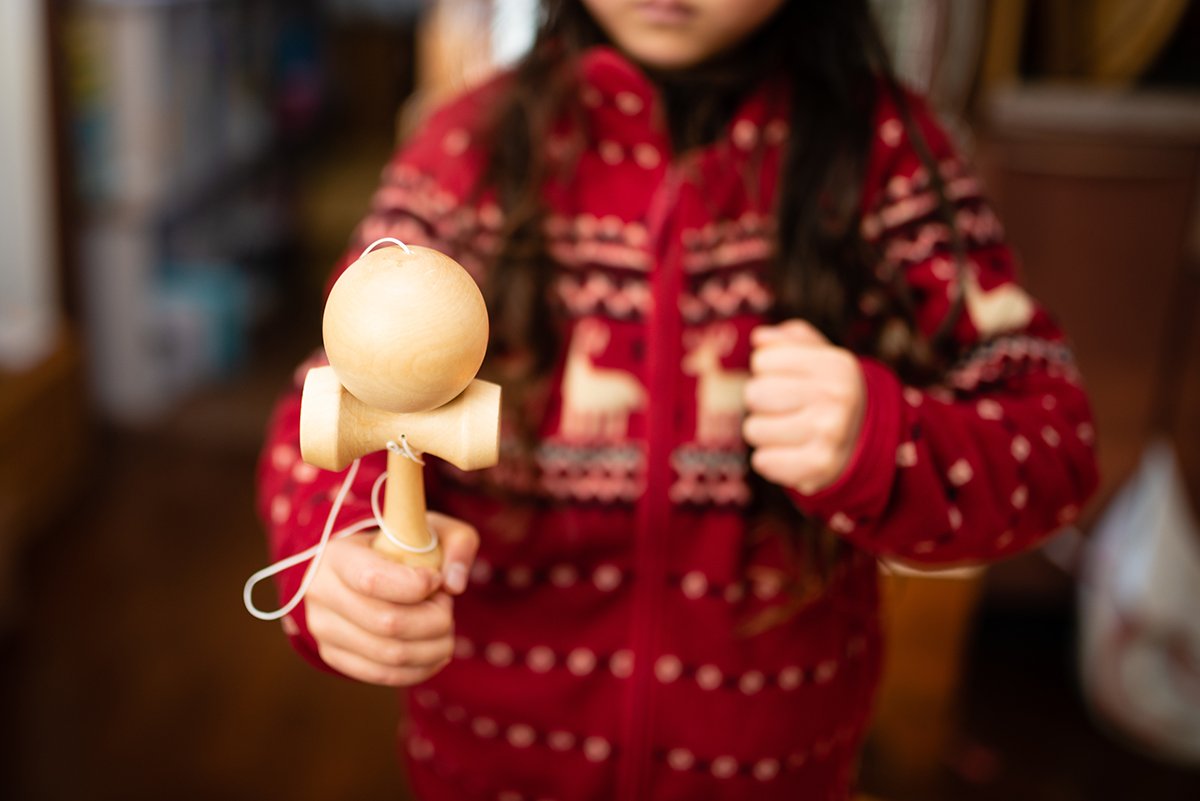Toys such as beanbags, marbles, and kendama have long been part of Japanese culture. Are these toys unique to Japan? Are there similar games overseas? There are many things we think we know about, but don't actually know.
Here we provide easy-to-understand explanations of trivia about traditional toys in Japanese culture, including their origins and provenance.
The origins and trivia of traditional Japanese toys

This time, we will introduce the origins and history of five toys that have been played in Japan since ancient times: spinning tops, beanbags, marbles, kendama, and battledores (hagoita).
The oldest toy in Japan is the "top"
It is still unclear when, where, and how the spinning top was invented. Toys similar to tops have been excavated not only in Japan but all over the world, and the oldest spinning top in the world is said to be a wooden cone-shaped top excavated in Egypt from around 2000-1400 BC.
The oldest spinning tops in Japan are known to have been excavated as "spotted tops," which are believed to date back to around the 6th century. Spotted tops are played with by hitting the top with a whip-like object to spin it. Conical wooden tops have also been excavated from the ruins of Fujiwara Palace and Heijokyo in Nara Prefecture, and are thought to have been used between the 7th and 10th centuries.
There are many different types of tops, including "twisting tops" that you spin with your fingers, "throwing tops" that you spin by wrapping a string around them, and "spooled tops." Tops have long been loved in Japan and around the world as a simple toy that you can "play with by spinning it."
Even Prince Shotoku played with "otedama"!
The origin of the beanbag is said to be around the 5th century BC, when it was invented by the Lydians, who lived in what is now Turkey. The Museum of Anatolian Civilizations in Ankara, Turkey, displays a relief depicting ancient Lydians playing with bone beanbags.
There are various theories as to when otedama were introduced to Japan from China around 1,300 years ago, during the Nara period. However, it is also said that Prince Shotoku (also known as Prince Umayado), a politician of the Asuka period, played with otedama.
The beanbag that Prince Shotoku is said to have used is a small, cube-shaped crystal ball called "Ishinatoridama" and is housed in the Tokyo National Museum.
The type of beanbag that comes to mind when you hear the word "otedama" is made of Japanese-patterned crepe material wrapped around azuki beans, and it seems that production began around the Edo period and spread to the common people.
The origin of "Ohajiki" is China
Like beanbags, ohajiki are toys that were introduced to Japan from China. They are said to have arrived in Japan around the Nara period.
When ohajiki were first introduced to Japan, there was a rule that you had to flick one with your finger, hit it against another, and get the one you hit. In ancient times, pebbles and shells were used, and it was mainly a game played by aristocrats at the Imperial Court and enjoyed by both men and women. During the Edo period, ohajiki became widely known among the common people as a toy for girls to play quietly at home. It is said that the current ohajiki, shaped like flattened glass, only began to become popular after the Meiji period.
Marbles have many unique terms such as "shikiri" (partition), "hijitsuki" (elbow), and "omawashi" (turning), and because they require not only strength but also the ability to control the marbles, they are a simple yet timeless toy.
The history of Japan's "kendama" is surprisingly new
The toy known in Japan as "kendama" has actually been popular all over the world for a long time. The oldest recorded mention of kendama is said to be from 16th century France, where King Henry III played with it.
Kendama is called "bilboquet" in French, and was a simplified stick-shaped version of the Japanese kendama. Kendama, known as "cup and ball" in English, as the name suggests, has a cup-shaped part for the ball instead of a stick, and is designed to be played with using only the parts attached to the left and right of the Japanese kendama. It seems that the kendama that was just introduced to Japan was also shaped similarly to this cup and ball.
The familiar Kendama we see today, which has a stick and two plate-like parts on either side, is called the "Nichigetsu Ball" and is said to have been invented in Hiroshima Prefecture during the Taisho era.
Compared to beanbags, marbles, and tops, the kendama that is played with around the world is a relatively new toy, and it was only in modern times that the form of kendama used in Japan today became popular. It turns out that while kendama may seem like a traditional toy, it is actually quite new.
"Hanetsuki (Hagoita)" was a ritual to ward off evil spirits!
Hanetsuki, a game often played during the New Year in Japan, is said to have originated from a game called Gitcho, which was played from the Nara to Heian periods. Gitcho involves hitting a ball with a mallet-like stick, and the winner is the one who knocks it into the opponent's territory, and the way it is played can be said to be the prototype of today's Hanetsuki.
Another reason for the origin of hanetsuki is said to be the influence of a game played in China in which feathered coins were kicked around. When hanetsuki first began, the battledores used for hanetsuki were called "kokiita" (goblin boards) and nuts with feathers attached were called "kokinoko" (goblin children), and hanetsuki competitions were held among the upper classes.
The "hu gui" in the names of Hu Gui Ban and Hu Gui Zi means "dragonfly" in old Chinese. Dragonflies are considered to be grateful insects that protect people from disease because they eat pests and mosquitoes.
For these reasons, it is thought that the battledore may have also had a ritualistic meaning, praying for good health.
summary

You will find that some of the toys known as traditional toys in Japan have been played with for a long time around the world, while others have only become popular in modern times. Toys that traveled from Europe to China via the Silk Road were introduced to Japan, where they then underwent their own unique development, and this history lives on in toys such as spinning tops and beanbags. Understanding the history and trivia about these toys will give you a different feel when playing with them, and will also be useful for cross-cultural exchange.
This article has been partially re-edited by KARUTA from an article originally published on "Nihongo Biyori."
Any unauthorized reproduction or use of the contents, text, images, illustrations, etc. of this website is strictly prohibited.
